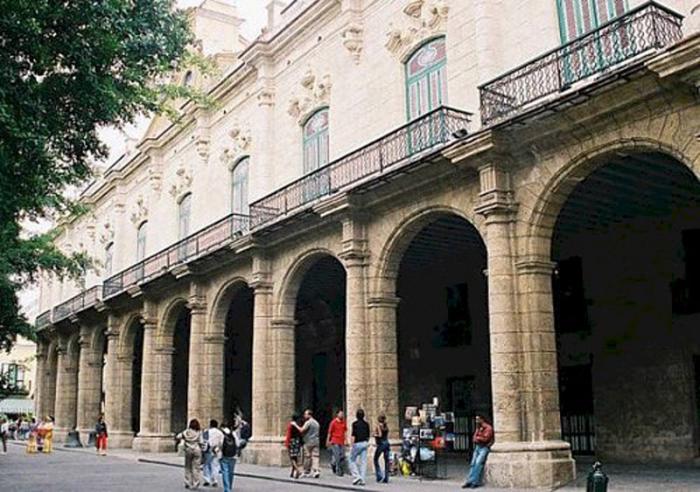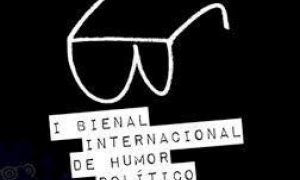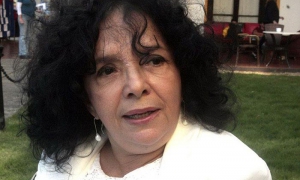
For the 14th consecutive year, the City Historian’s Office is inviting Havana natives and visitors to learn more about the colonial part of the city founded in 1519, through a special summer program entitled Rutas y Andares (Routes and Wanderings). All tours begin at the Palacio de los Capitanes Generales. According to City Historian Eusebio Leal, "Rutas y Andares has become a unique opportunity to reach the beating heart of the Central Historic District, declared a World Heritage site by UNESCO in 1982," and rediscover the most ancient parts of the Cuban capital. For many, it’s about seeing the city with new eyes. Havana families take advantage of summer vacations to initiate their youngest members into the beauty of the city where they live, and learn more themselves. During July and August, the 14th season of the program will include a focus on the sciences and museums, said Lilibeth Bermúdez from the Historian’s Office, during a press conference in the Casa de Africa. The maxim popularized during International Museum Day, "Collections create connections," will be emphasized as well, she stated. Inside the Casa Guayasamín. The Special Routes are returning, including those to sites such as the Centro Hispano-Americano de Cultura, Factoría Habana, Saint Francis of Assisi Convent and Quinta de los Molinos. These are sites not to be missed. The Hispano-American Cultural Center is located in a majestic palace on the city’s waterfront known as the Casa de las Cariátides, named for its singular columns featuring women’s faces atop the columns on its front balcony. All activities begin at the Captain Generals’ Palace on the Plaza de Armas, where families congregate with the expectation of a different kind of encounter with their city. Included in options available again this year are a meeting with Leal Spengler, and a concert in the recently restored Martí Theater. The program, running July 8 through August 28, is offering nine views of the city and new ways of approaching museums, this year including visits to several with a common focus. The 14th season includes special attention to the sciences and ethnography, although the Science Route has always been well-received, and this year will take participants to the historic pharmacies Sarrá - where the Havana Pharmacy museum is located - Taquechel and Johnson, a trio of fully restored 19th century establishments on Obispo Street; the Casa Alejandro de Humboldt; the Planetarium and the National Natural History Museum. The Taquechel Pharmacy was founded by the eminent pharmacist Francisco Taquechel in 1898, and gained fame in that era for the quality of its products and reasonable prices. The current store-museum features its original display cases and exhibits a variety of 19th century porcelain bottles and containers, plus a few items from the 1700’s, in addition to pharmacy tools and equipment from that era, along with books in which prescriptions are collected. The Casa de los Árabes. Following the path of excellence originally taken, the pharmacy sells a broad range of natural remedies, homeopathic medicines, cosmetics, supplements, and other Cuban products. Of special interest among these are creams based on seaweed, honey, vitamins and anti-oxidant minerals, as well as products made with shark cartilage. Another highlight of the tour is a stop at the Havana Planetarium, inaugurated December 21, 2009, in the former Habana movie theater on Plaza Vieja. Various institutions participated in its construction, including the City Historian’s Office and the Japanese government. Visitors can learn about the 13.7 billion-year history of the universe since the big bang, captured in a multimedia spectacle. Next along the route is the National Natural History Museum, located on the Plaza de Armas, at the corner of Obispo and Oficios Streets, surrounded by significant historical buildings such as the Captain Generals’ Palace, the Templete and the Second Corporal’s Palace. The museum’s exhibits focus on different topics and of special importance are those featuring Cuba’s history, geography, marine biology and terrestrial ecosystems. The Planetarium. Providing an opportune connection is the subsequent stop at the Alejandro de Humboldt Museum, dedicated to this German biologist (1769-1859), located in a colonial building at 254 Oficios Street, on the Plaza de San Francisco de Asís, near the mansion where the naturalist stayed during his visits to Havana in the early 19th century. This year the program is also focusing on the city center’s ethnographic museums, introducing participants to the different cultures represented in these collections. These tours include visits to the Casa del Benemérito de las Américas Benito Juárez, headquartered in a restored mansion on Obra Pía Street, and inaugurated in 1988. The museum features a permanent exhibition of Mexican ceramics and a small display of pre-Colombian art. A few steps away, along Mercaderes, is the Casa Museo Simón Bolívar which opened on July 24, 1993, the anniversary of the Liberator’s birth. Among the articles sold at the Farmacia Taquechel museum-store are creams and products based on seaweed and shark cartilage. Its headquarters is another mansion built between 1806 and 1817 which had among its most illustrious residents the Marquis of Aguas Claras and the Count of Villanueva, who sold the building to Santiago Burnham, a native of the United States. Strangely enough, the rose window above the main door bears the initials SB, for the proprietor Santiago Burnham, now coinciding with the name of the cultural center currently occupying the building. This tour naturally continues with a visit to the Casa Museo Oswaldo Guayasamín, 111 Obra Pía Street, once the great Ecuadoran painter’s studio. The center was opened January 18, 1992, as a result of efforts by Guayasamín himself and the City Historian’s Office. A full restoration returned to its former splendor the 18th mansion belonging to the Peñalver family, and several murals were discovered in the process, a significant archeological find, shedding light on the architecture of colonial Cuba. A Casa de África exhibit. The Casa Guayasamín has three permanent exposition halls in which some of the painter’s personal possessions and donated original works are displayed. The East can also be discovered in colonial Havana, at the Casa de Asia, appropriately located on Mercaderes (Merchants) Street, an important commercial avenue in the early days of the capital, where traders, including Asian immigrants, established themselves. The building, constructed in 1668, is among the oldest still in use. Items representative of this ancient culture can be appreciated here: tiny, elaborately decorated elephants guarding Buddha’s Tooth, exquisite jade figurines, precious good luck stones, and ceramics used in tea ceremonies dedicated to harmony and equilibrium. Next comes a stop at the Casa de Africa, located in a grand building which, in the 19th century, served as a tobacco warehouse and trade center. More than 2,000 pieces are included in its permanent exhibit, illustrating the history of Africans’ arrival in Cuba as a slave workforce. The Casa de los Árabes was opened in 1983, in a building dating from the end of 18th century. Its fundamental goal has been the dissemination of the Arab world’s values, by presenting its customs, traditions, art, architecture and studies of the Arab presence in Cuba, from the first contacts which came as a result of Spanish colonial rule, and later immigration during the 19th and 20th centuries. The Ibn Jaldun library here includes important collections addressing Arab and Islamic topics. Of particular interest are chronicles from the 19th century; essays on Islam; and texts about contemporary Arab and Islamic history and art. Don’t hesitate, the Rutas y Andares program offers a unique opportunity to appreciate the wonders of Havana. There is always something magical to discover, to learn, in the central historic district.






